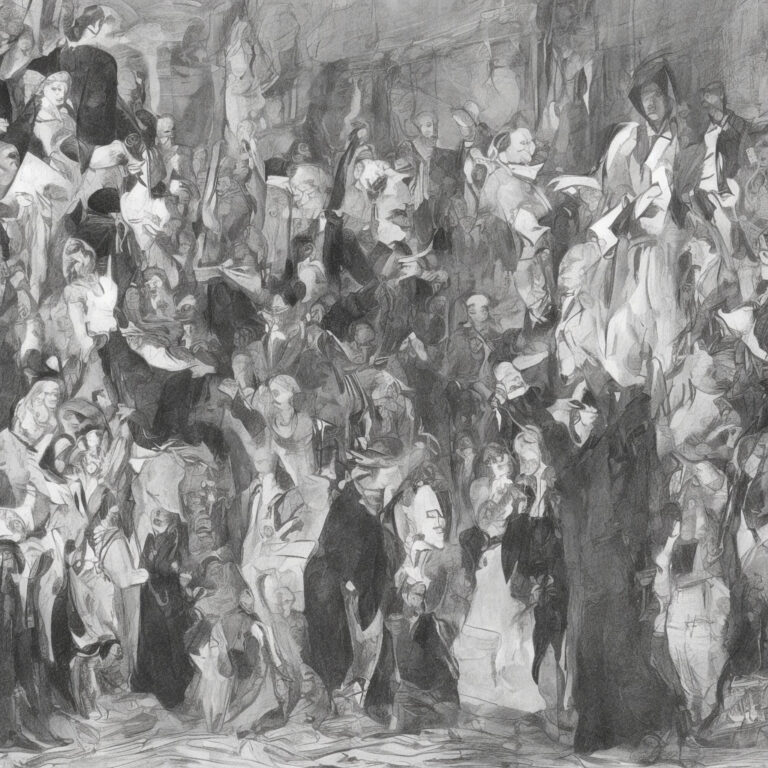🎶 Did you know #Journey’s “Line of Fire” was almost left off their 1980 album? 🔥 Talk about a close call! 🤯 Give this iconic tune a listen to feel the heat! 🎸 #ClassicRock #LineOfFire #MusicTrivia Read about it: tinyurl.com/332p2vwz
Journey’s Fiery Classic: A Retrospective Look at a Rock Anthem
“Line of Fire: Journey’s Underrated Rock Anthem Showcasing Timeless Talent and Fiery Passion”

Journey, formed in San Francisco in 1973, has etched their name in rock history with their everlasting hits like “Don’t Stop Believin'” and “Open Arms.” The band has seen its fair share of changes in its lineup, but its core members – Neal Schon on lead guitar and Ross Valory on bass – have been permanent fixtures throughout the years. The iconic voice of Steve Perry, who joined the band in 1977, elevated Journey to new heights and made them a household name. Over the decades, the band has racked up numerous accolades, including diamond certifications for their albums “Escape” and “Greatest Hits” by the RIAA. To this day, they continue to perform and create music that resonates with multiple generations.
One song that often doesn’t receive the attention it deserves is “Line of Fire” from their 1980 album “Departure.” This track showcases everything that made Journey a dominant force in the rock genre – powerful vocals from Steve Perry, impeccable guitar work from Neal Schon, and an infectious rhythm section consisting of Ross Valory on bass and Steve Smith on drums.
“Line of Fire” begins with an adrenaline-pumping riff from Schon, setting a fiery tone for the rest of the song. Perry’s larger-than-life vocals paint vivid pictures of love, devotion, and the emotional turmoil that accompanies it. The chorus is a memorable one, with Perry belting out the words, “Here I am, in a line of fire / All at once, my defenses crumble,” conveying the sheer vulnerability and passion that love can bring.
While “Line of Fire” is undeniably a Journey classic, it’s worth noting that the song’s lyrics can feel cliché at times. Lines like “I don’t wanna know about heartache / ‘Cause I can’t stand the pain” have been explored in countless other rock ballads. However, the overall impact of the song remains strong, thanks to the skilled musicianship of each band member and the undeniable chemistry they share.
Over the years, Journey has been recognized for their indelible contributions to the music industry. The band was inducted into the Rock and Roll Hall of Fame in 2017, a testament to their lasting influence and enduring popularity. While they may not be leading the charts these days, their classic hits, including “Line of Fire,” continue to receive airplay and find their way into the hearts of new listeners who appreciate the timeless appeal of an expertly crafted rock anthem.
In summary, “Line of Fire” is a shining example of what makes Journey a rock powerhouse. It may not be their most popular track, but it remains a beloved classic that deserves its spot in the band’s impressive catalog.
Charting the Success of an Iconic Tune
“Line of Fire” ignites Journey’s chart-topping legacy, fueling the “Departure” album’s Platinum success and captivating fans worldwide.

When it comes to chart success, “Line of Fire” holds its own among Journey’s impressive array of hit songs. Released on February 1, 1980, as part of their seventh studio album, “Departure,” the song quickly gained traction with fans and music lovers alike.
“Line of Fire” may not have been released as a single, but that didn’t stop it from becoming a beloved track among Journey’s vast discography. The album “Departure” itself was a commercial success, reaching #8 on the Billboard 200 in April 1980. This marked a significant improvement from their previous album, “Evolution,” which peaked at #20.
While “Line of Fire” didn’t receive its own chart position, it undeniably contributed to the overall success of the “Departure” album. As a part of Journey’s live performances, the track consistently brought excitement and energy to their shows, captivating audiences around the world.
As for other chart trivia, it’s worth noting that “Departure” was Journey’s first album to be certified Platinum by the RIAA, and “Line of Fire” played a role in achieving this milestone. The album went on to be certified 3x Platinum in the United States, proving its lasting impact on fans and the music industry as a whole.
Given the song’s enduring popularity, “Line of Fire” remains an essential part of Journey’s legacy and a testament to their universal appeal.
Unraveling the Powerful Story Within the Lyrics
Throughout the years, Journey has been known for weaving intricate and heartfelt narratives into their lyrics, and “Line of Fire” is no exception. This track, which was released in 1980 as part of their album “Departure”, takes listeners on a rollercoaster of emotions as it delves into the complexities of navigating through difficult times and finding the courage to persevere.
Here I am standing in the line of fire
It’s gonna take a mighty storm to break through
All the hurt I’ve caused, all this time
I can see the tears in your eyes
But there’s no need to cry, there’s no need to cry
Here I am standing in the line of fire
It’s gonna take a mighty storm to break through
All this time I’ve caused, all this hurt
All this hurt I’ve caused, all this time
I can see the tears in your eyes
But there’s no need to cry, there’s no need to cry
These lyrics poignantly convey a sense of vulnerability and raw emotion, touching on themes of guilt, introspection, and the struggle for redemption. It’s clear that the protagonist is seeking forgiveness for their past actions, acknowledging the pain they have caused and hoping to find a way to mend the wounds. “It’s gonna take a mighty storm to break through,” they admit, realizing the enormity of the task at hand, but still determined to make amends.
During the time this song was released in the early 80s, the world was experiencing significant political and social turmoil, with major events such as the rise of the AIDS crisis and the height of the Cold War. These events undoubtedly had an impact on the collective psyche, leading to feelings of uncertainty, instability, and powerlessness. The lyrics of “Line of Fire” could be interpreted as a reflection of this societal unrest, as well as the personal battles each individual faced amid these challenging times.
The band’s ability to tap into the spirit of the era and articulate the emotional intensity experienced by many during those years is one of the reasons why Journey’s music has stood the test of time. “Line of Fire” serves as a testament to their remarkable songwriting prowess and their keen understanding of the human experience.
A Visual Journey: The “Line of Fire” Music Video
Unearthing Journey’s pre-MTV gem “Line of Fire” through fan-made visual masterpieces, celebrating the band’s enduring legacy and magnetic charisma.
The music video for Journey’s “Line of Fire” doesn’t exist in the traditional sense because it was released before the MTV era. However, fans of the band have more than made up for this by creating their own videos, tributes, and live performance compilations that capture the energy and emotion of the song.
One such fan-made video, which has garnered thousands of views on YouTube, combines clips from the band’s live performances, showcasing their raw talent and undeniable stage presence. This particular video captures the essence of Journey’s live shows during their 1980 “Departure” tour, showcasing the band’s musicianship and the magnetic charisma of Steve Perry, the band’s frontman. The footage is expertly cut and synced with the audio to create a seamless visual experience that perfectly complements the song.
Additionally, many tribute videos have been created by fans, often featuring montages of iconic moments from the band’s history. These fan-made videos pay homage to the impact that “Line of Fire” and Journey as a whole have had on the world of music. They serve as a testament to the band’s enduring legacy and the strong connections formed between fans and the music they love.
While there isn’t any official music video for “Line of Fire,” the creative force of Journey’s fanbase has ensured that the song lives on through various visual interpretations, adding new depth and dimension to the track. These fan-made videos, even though not professionally produced, offer a unique look into the passion and dedication that Journey’s music continues to inspire.
The Maestro Behind “Line of Fire”
It’s no surprise that the brilliance of “Line of Fire” can be traced back to the exceptional talents of Journey’s primary songwriter and keyboardist, Jonathan Cain. Prior to joining the band in 1980, Cain was a member of The Babys, where he had already begun to hone his songwriting chops. With Journey, Cain’s prowess only continued to flourish, as he co-wrote some of the band’s biggest hits alongside bandmates Steve Perry and Neal Schon.
Cain’s songwriting portfolio is brimming with classics that have graced the airwaves for decades. Among his many notable contributions, one cannot overlook “Don’t Stop Believin’,” Journey’s most iconic anthem and a song that has resonated with generations of fans. In addition, Cain co-wrote other chart-topping hits such as “Who’s Crying Now,” “Open Arms,” and “Separate Ways (Worlds Apart).” With a keen sense of melody and an ear for memorable hooks, Jonathan Cain’s impact on Journey’s sound and success is truly undeniable.
Celebrating Accolades and Memorable Appearances
“Line of Fire”: A timeless rock anthem igniting generations through film, TV, gaming, and unforgettable covers.

Over the years, “Line of Fire” has earned its fair share of recognition and honors. Although it may not have taken home any major awards, the song has undoubtedly secured its place as a classic rock anthem. Journey fans often regard it as one of their best songs, and it has continued to maintain its status as a fan favorite throughout the years.
In addition to its popularity among fans, “Line of Fire” has made numerous appearances in the world of film, television, and gaming. One notable instance was its feature in the 2013 action-packed video game, “Grand Theft Auto V,” where it was included in the game’s expansive soundtrack, introducing the track to a whole new generation of fans. The song’s exhilarating tempo and invigorating vocals blended perfectly with the game’s high-octane, adrenaline-pumping atmosphere.
One can’t discuss “Line of Fire” without mentioning the variety of cover versions that have been produced over time. Several artists have tried to recreate the magic of the original while putting their spin on it. Among these, versions by Leo Moracchioli and the Swedish metal band, Enforcer, garnered particular attention thanks to their unique interpretations of the well-loved classic. The variety of covers speaks to the song’s timeless appeal and its ability to resonate across different genres and styles.
As the years go by, “Line of Fire” continues to leave an indelible mark on the world of rock and on the hearts of countless fans. Its lasting impact, memorable appearances, and various interpretations are a testament to Journey’s lasting legacy and their place in the pantheon of rock legends.
Dissecting the Musical Layers
Diving into the musical structure of “Line of Fire,” we find that it is predominantly written in the key of A minor, giving it that slightly darker and more intense sound. The song features a blend of various elements that contribute to the overall feel and atmosphere of the track.
Starting with the chord structure, “Line of Fire” is built upon a solid foundation of power chords. The main riff, which runs throughout the song, employs a catchy and driving pattern of Am-G-F-G-Am, providing a strong backbone for the melody to build upon. The chorus, on the other hand, shifts the focus to a more uplifting and anthemic progression of C-G-Am-F, giving the song its memorable and sing-along quality.
In terms of tempo, “Line of Fire” clocks in at approximately 124 beats per minute, which provides a steady, mid-tempo pace that allows for both the energetic verses and the soaring choruses to shine. The rhythm section, consisting of the bass guitar and drums, does a fantastic job at maintaining this tempo and providing a solid groove that keeps the listener engaged.
The song also showcases the band’s prowess in arranging and layering various instruments to create a textured and dynamic soundscape. The guitars employ a mix of palm-muted power chords and melodic lead lines that interweave with one another, creating a sense of depth and complexity. The keyboards, on the other hand, provide a lush and atmospheric backdrop, filling out the sonic space and adding a touch of warmth to the overall mix.
One of the standout elements of “Line of Fire” is, of course, the vocal performance. The lead singer’s powerful and emotive delivery perfectly complements the song’s subject matter and adds an extra layer of intensity to the already gripping musical arrangement. The backing vocals, too, play a crucial role in enhancing the chorus sections and providing a sense of grandiosity to the track.
Overall, “Line of Fire” serves as a prime example of Journey’s ability to craft intricate and engaging musical arrangements that are both accessible and rewarding for listeners. The song’s blend of catchy melodies, powerful vocals, and expertly layered instrumentation make it a standout track in their discography and a testament to their enduring legacy as a band.







